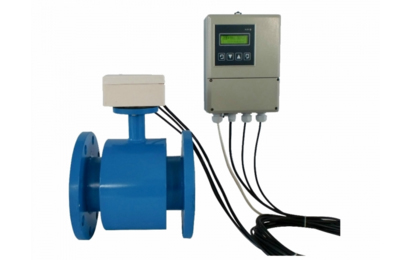Among all flow meters, the electromagnetic flowmeter has the highest search index. The more people who search, the higher the recognition of the electromagnetic flowmeter. The reason for the choice is: high cost performance and high precision. Before understanding the accuracy of electromagnetic flowmeters, let’s first understand what accuracy isDefinition of accuracyAccuracy refers to how close the observed value is to the true value. When every physical quantity needs to be represented by a numerical value, it is necessary to formulate a standard and choose a unit. The formulation of this standard is usually based on people’s knowledge and understanding of the measured physical quantity, and consider practical issues such as whether the standard is easy to replicate or whether the measurement process is easy to operate.From the above, it is not difficult to understand that accuracy is the standard of artificial manufacture, so can electromagnetic flowmeters also be manufactured manually? In fact, the accuracy is not as much as we want. This is a wrong perception. For example, if the user needs to manufacture an electromagnetic flowmeter with an accuracy of 0.5%, our nameplate can be marked with an accuracy of 0.5%, which is not 0.5% of the electromagnetic flowmeter calibration, but sometimes it may reach 0.3%. The electromagnetic flowmeter must be calibrated from calibration to delivery. The purpose of calibration is to check whether the accuracy is up to standard. If the fluctuation is too large, it may reach 0.3%.Precise reminderAs an industry insider, we all know that the higher the accuracy of the electromagnetic flowmeter, the more accurate the measurement. The smaller the accuracy value, the higher the accuracy, for example, 0.1% and 0.2%.
Before understanding the accuracy of electromagnetic flowmeters, let’s first understand what accuracy isDefinition of accuracyAccuracy refers to how close the observed value is to the true value. When every physical quantity needs to be represented by a numerical value, it is necessary to formulate a standard and choose a unit. The formulation of this standard is usually based on people’s knowledge and understanding of the measured physical quantity, and consider practical issues such as whether the standard is easy to replicate or whether the measurement process is easy to operate.From the above, it is not difficult to understand that accuracy is the standard of artificial manufacture, so can electromagnetic flowmeters also be manufactured manually? In fact, the accuracy is not as much as we want. This is a wrong perception. For example, if the user needs to manufacture an electromagnetic flowmeter with an accuracy of 0.5%, our nameplate can be marked with an accuracy of 0.5%, which is not 0.5% of the electromagnetic flowmeter calibration, but sometimes it may reach 0.3%. The electromagnetic flowmeter must be calibrated from calibration to delivery. The purpose of calibration is to check whether the accuracy is up to standard. If the fluctuation is too large, it may reach 0.3%.Precise reminderAs an industry insider, we all know that the higher the accuracy of the electromagnetic flowmeter, the more accurate the measurement. The smaller the accuracy value, the higher the accuracy, for example, 0.1% and 0.2%.
Post time: 21-09-21
